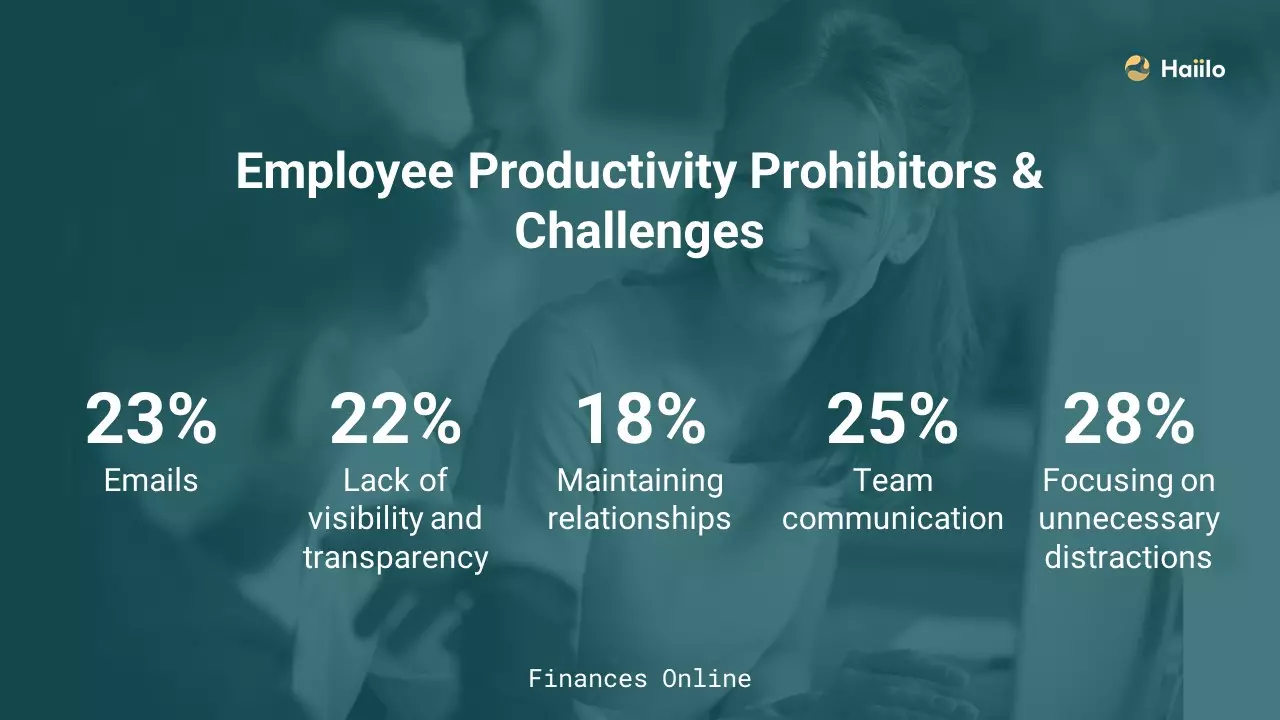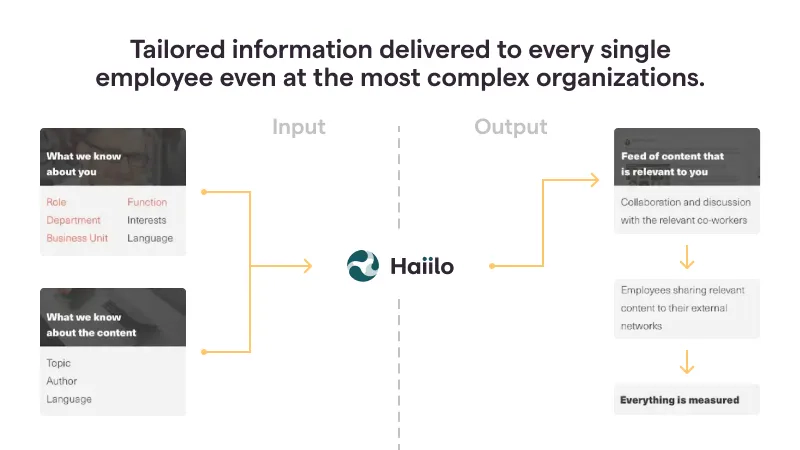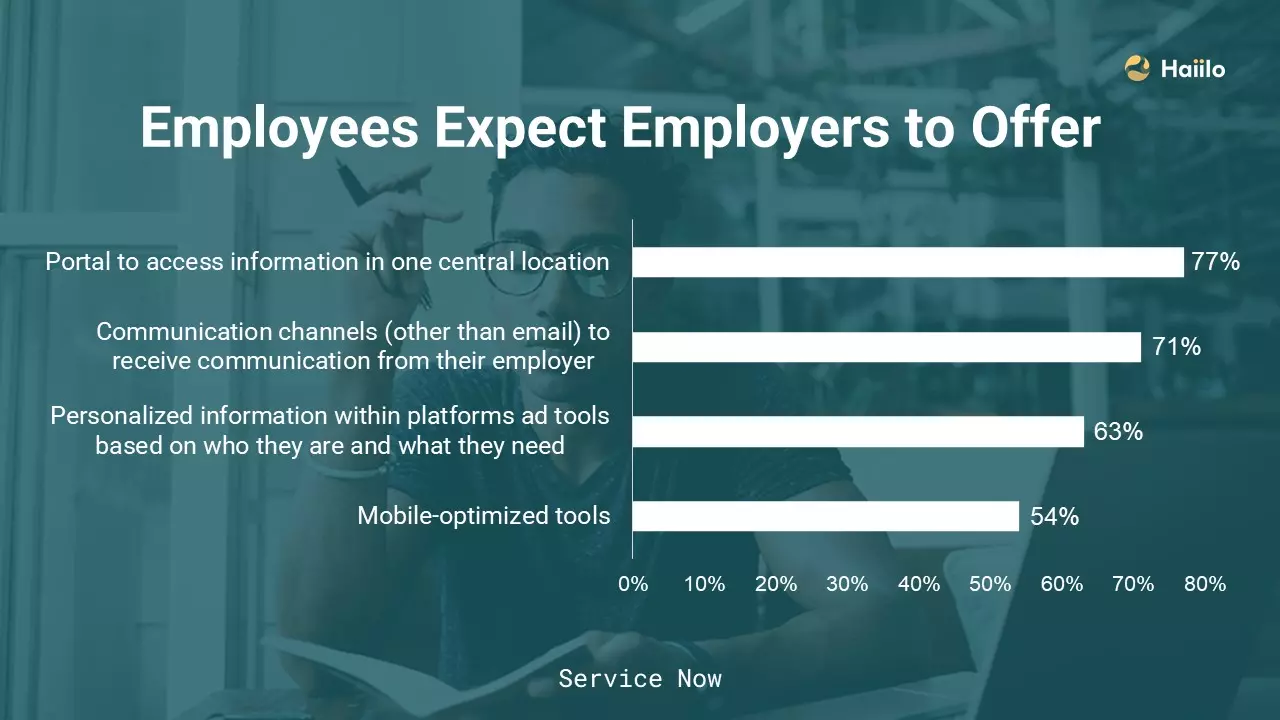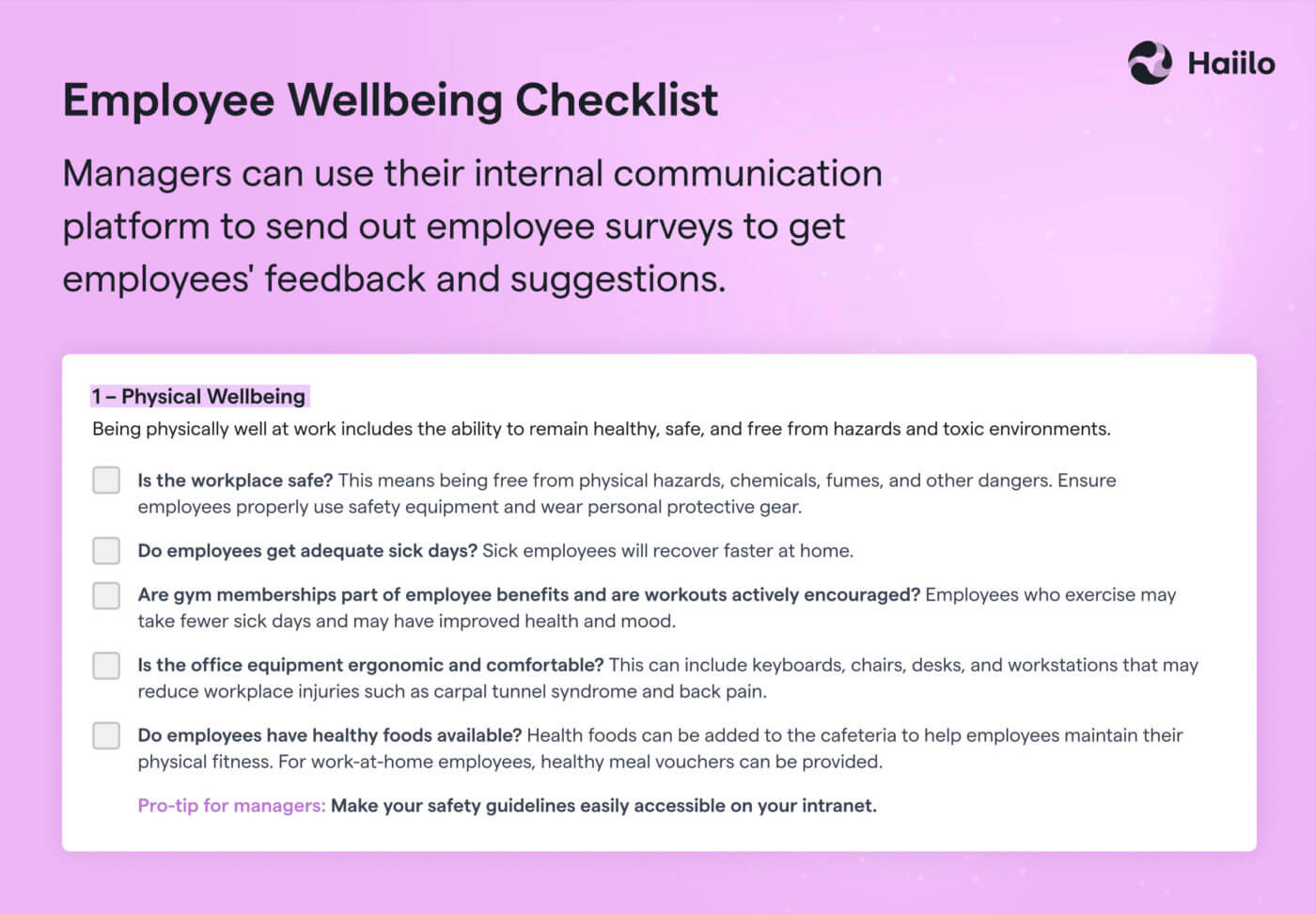The way employees work has been disrupted. Employers need to find new ways to keep their workforce motivated, engaged and productive now that they are physically separated.
COVID-19 has a big impact on how work gets done and the longer term implications for employers and employees are far reaching. Some employers have found that their employees can be just as productive away from the office. For that reason, it seems increasingly likely that we will see an accelerated shift towards more agile way of working.
🔎Check out our article on The Characteristics of Remote Teams and learn how to communicate with your employees.
Still, employers have to understand what are the biggest challenges that have a negative impact on employees’ productivity in order to eliminate those factors.

In this blog, you will find some of the most important tips for ensuring your employees’ productivity in the post-pandemic world.
How the Current Situation Is Affecting Employee Productivity
Employees are the face of any organization. Even a small change in the working process breaks the work velocity. While granular changes may be easier to handle and overcome, a situation like COVID-19 needs a lot more planning and adjustment to newer ways of working.
During and after this crisis, organizations need to lay particular emphasis on restoring employees’ emotions and trust in order to maintain productivity and employee engagement. Workplaces with open communication, support from the managers, leadership, HR, internal communications and remote working environments are some of the pre-requisites for ensuring employees’ productivity and business success.
Leaders, managers and internal communications professionals have an extremely important role in keeping employees connected and engaged. The impact of the pandemic has taken a significant toll on employees’ personal, social, and professional lives. Overwhelming fears around health, safety and job uncertainty are continuously leading to anxiety, frustration, and low employee morale.
If employers don’t find ways to buckle down these concerns, these feelings can break employees’ motivation to work, which will lead to low productivity, poor quality of work, and will have an impact on organization’s ability to function effectively during and after difficult times.
Keep your employees engaged and productive by using the right IC tools
12 Ways to Make Sure Your Employees Stay Productive
With remote work becoming the “new normal”, organizations across the world are looking for advice on how to adapt to these changes in order to ensure business continuity and employee productivity.
Let’s take a look at the 12 best practices to mitigate the consequences of this crisis and continue to drive productivity in your workplace.
1. Focus on employees’ health, safety and wellbeing
Employers’ focus on health, safety and wellbeing of their employees is more obvious than ever before. Organizations need to put extra effort in these things in order to build trust among employees and keep their motivation and morale levels high.
With only 47% of leaders feeling “very confident” of their ability to manage their employees’ well-being and morale, it is important that organizations continue to provide support to their employees and to recognize people’s individual challenges.
2. Build a Business Continuity Plan
Your employees’ productivity depends on how well you are prepared to handle and address crises. This is why many organizations will remember 2020 as the year of business continuity planning. Without it, you and your entire workplace will not have a clear sense of how to return to the business as usual.
Develop an overall workforce strategy and action plan that puts people first. However, having such a plan means nothing if you don’t have a strategy around how to best deliver and communicate it to your own employees.

Addressing employees’ concerns in an open and transparent manner will go a long way towards building trust and ensuring business continuity.
3. Keep your workplace “social” even when your employees are socially distanced
Many companies are now rethinking their organizational cultures and core values. People not accustomed to being “socially distanced”. This is why your employees’ productivity may be disrupted by cultural and social challenges linked to the current tendency towards enforced teleworking on a scale that we have never experienced before.
How leaders, managers and organizations as a whole support their employees and help them to stay connected will have the major impact on company culture and employee experience.
More than ever before, employees need to have an easy way to communicate and collaborate with their peers and managers. Leaders and internal communications professionals have to be the ones leading the transformation towards more open and transparent workplaces in order to boost employee productivity and success.
As trust and transparency in the workplace are some of the most in-demand traits employees are looking for in their employers, they not only influence employee productivity, but also enable employers to attract and retain talent in their organizations.
Millennial employees want to understand how companies operate. They want to feel a sense of inclusivity and trust while being a part of your company. When Millennials work at a company with a high-trust culture, they’re 22x more likely to stay in their company long term.

4. Listen actively and forget about one-way communication
Employees who don’t feel heard are less likely to be motivated to do their jobs successfully and go the extra mile. This is especially true now when employees have many concerns, and they expect from their employers to show empathy.
This is why we see today, more than ever before, employers conducting regular employee surveys and enabling technology that ensures two-way communication in the workplace.
Therefore, the times when companies would just send email updates and announcements to the entire workforce are long gone. Not only that such approach to communication is not effective, but it may also result in employees missing critical information about the pandemic.
To ensure employees are heard and not hurt, managers must have a two-way communication process with employees. When employees are allowed to speak about their concerns, managers and peers have a better understanding of an employee’s negative emotions.

HR, leaders and internal communicators should assist and enable managers in creating two-way communication channels among employees and managers about the positive and negative consequences of the coronavirus pandemic.
5. Keep your employees informed and ensure easy access to important information
By now, organizations have understood the importance of communicating during this crisis. Many employers are making weekly or even daily updates to their company’s operations and working policies. This will not go away any time soon as we still don’t know what the future of this pandemic will bring. Moreover, it is expected for new waves to come back forcing employers to practice strict social distancing instructions again.
All these changes happening within organizations, as well as important pandemic-related information and safety tips, need to be communicated to employees in a timely and personal manner.
How do you ensure that everyone gets and actually reads such critical information and that there is no misinformation in the workplace?

Unfortunately, these are some of the biggest struggles large enterprise companies are facing right now, which also has a negative impact on employees’ productivity and safety in the workplace.
Employers need to understand that employees expect information to find them, not the other way around. They are used to their favorite news apps, social media and messaging tools, and they expect their company’s internal communication solution to mimic the way these apps work.
With modern software solutions, employers can create channels designated to crisis, send push notifications to their employees, easily segment and filter audiences and, therefore, ensure that important information never gets lost.
6. Enable managers to lead their remote teams more effectively
The author of the Gallup article COVID-19 Has My Teams Working Remotely: A Guide for Leaders stresses the importance of enhanced leadership and manager communication in virtual organisations.
Employees who are used to having a quick chat with their boss risk losing their focus, engagement and motivation without these daily physical encounters.
The past two months have challenged leaders to think about how to engage and inspire their teams in a time of uncertainty and constant change.
Managers are the ones who can create optimal conditions for remote working by:
- Individualizing employees’ preferences
While some employees feel isolated when working from home, others may prefer the freedom that remote work offers. Some may need more guidance, while others may be more self-disciplined. To stimulate your employees’ productivity and engagement, managers have to identify and support their individual preferences as to how they would like to organize their remote working days.
- Setting clear targets and expectations for their teams
When we are all in the same working space, it is easier for managers to communicate clear goals and expectations to their employees. When working miles apart, however, this may be a little bit harder.
Setting clear goals fuels employees’ productivity, commitment and motivation, providing the freedom for them to act independently within the defined boundaries.
- Communicating regularly
When working at home, those employees who prefer to work in the office often feel cut off from their in-house community, resources and the daily office chitchat. For them to be able to stay productive and motivated, they need an open line of communication with colleagues and management.

- Providing and asking for feedback
During and after this pandemic, managers should make more space for feedback. Don’t assume that your team will bring concerns to you or feel comfortable sharing how they are feeling. Instead, ask questions and find out what they need from you. What roadblocks are individuals facing? Are they clear about the desired outcomes and know how to get there? How are they coping with the current situation?
Additionally, managers should actively offer feedback. They should provide frequent and on-the-spot feedback to keep their teams happy and productive.
7. Keep your employees connected and ease cross-functional collaboration
While communication in the workplace is not a new challenge for many organizations, this crisis has opened many employers’ eyes around the seriousness of the consequences of poor employee communications.
To highlight how widespread dissatisfaction with company communication is, Gallup report stated that 74% of employees felt disconnected at work; they also believed they were missing out on important company information and news.
Feeling disconnected may not seem like such a big problem when it happens every now and then. However, now when remote work is the new normal, this could become an extremely big challenge for companies that still haven’t found ways to keep their employees connected and haven’t enabled them to collaborate effectively. Consequently, employees’ productivity will suffer.

Successful remote companies have well-established processes that continually ensure that people are socializing and no one is feeling isolated and falling through the cracks.
Some studies have found that people working together in the same room tend to solve problems more quickly than remote collaborators, and that team cohesion suffers in remote work arrangements.
As remote work is here to stay, we need to find solutions to mitigate its negative sides. Luckily, employee communications software solutions help organizations keep their employees connected and, therefore, enhance productivity in the workplace.
📚 Read on about: How to Improve Cross-Functional Collaboration in the Workplace
8. Eliminate information overload
These days, information is everywhere around us, and that can become overwhelming. Even though overcommunication in the workplace is a good thing, there needs to be a barrier between who needs to get what type of information.
Yes, the easiest way to deliver information would be just to send a bulk email to the entire workforce and hope that they read it. This won’t happen!

Deliver irrelevant information a few times to your employees, and they will start ignoring future messages being delivered their way. Therefore, it is very important for employers to understand that too much irrelevant information can be just as frustrating as too little information.
On the other side, many large organizations with complicated communication structures are struggling to eliminate information overload in the workplace, resulting in redundant messages, inconsistent discussions, poor employee experience and lower productivity levels.
To avoid information overload, you have to make sure that the right content finds the right employee at the right time.
Not everyone should get the same, generic enterprise messages or emails. Instead, information that employees receive should be personalized based on their functions, locations, languages that they speak, their interests and favorite communication channels.
This is how Haiilo enables its users to deliver more personalized and targeted messages to their employees by out-of-the box targeting, filtering and audience segmentation.

Such technology has become a must-have for organizations across the world, and it has completely transformed their internal communications efforts during this crisis. Software solutions like Haiilo help employers keep their employees productive because they are not wasting their time searching for the information they need.
9. Make remote work easier and more accessible
At the beginning of this crisis, many organizations thought that remote work may hurt businesses as Talent Management practices have been completely disrupted. However this is not the case. Moreover, many of them are considering keeping remote work options even after the pandemic.
68% of CFOs say crisis-driven transitions to remote work will make their company better in the long run. Currently, 40% of companies say they’re planning to accelerate new ways of working.
Employers are looking for ways to enhance processes that have been successful using new technologies, and finding cost-effective ways to improve their core operations.
Also, many organizations understand that, with the return to the workplaces, the way we work will still be significantly different than it was a few months back.
It is crucial for employers to embrace and evolve new employee behaviors and new ways of working that make the most sense for their workplaces. Let go of how you have always done things. Instead, act quickly and decisively to adopt new strategies, tools, technologies and ways of collaborating and communicating in the future.
10. Recognize your employees’ efforts
Through this pandemic, some employees work double to keep up with business standards and run their businesses as usual. As COVID-19 has led to disruption in work and may cut down on employee engagement in some organizations, managers need to magnify their employee recognition efforts.
Effective recognition not only motivates the employees and makes them more productive, but also sends a strong message to other employees about the preferred behaviors.
Recognition doesn’t have to be monetary. Sometimes, non monetary recognition may even have a bigger impact. It can take a form of a public acknowledgment, a token of appreciation, display name in the hall of fame board, low-costs perks, shout-outs, or a simple thank-you message.
11. Understand the power of technology in keeping your employees productive
As companies continue to trend towards globalization, telecommuting, and work-life balance, tech-enabled communication isn’t going anywhere.
According to research, 87% of employers say they have put in place measures to ensure that people feel supported from their manager or fellow team members. Meanwhile almost 98% of employers are conducting regular communication to keep all employees updated and engaged, and 85% have implemented a virtual or social engagement initiative.

Employers need to understand that we live in a time when there are so many ways companies can communicate with their employees: instant messaging apps such as Slack and MS Teams, email, Lync, Zoom/Skype, e-learning, newsletters, surveys and so on.
Therefore, is it not ironic that most companies still struggle to identify the best way to update and communicate with their teams. Internal communications ecosystems have become extremely complex, and organizations need to find a way to connect all the communication channels into a single platform.
As Willis Towers Watson GB leader, rewards line of business Hazel Rees says:
“Technology has been a saving grace during this crisis, helping to keep productivity levels up, while organisations with a greater online presence have been able to continue more effectively and in some cases even thrive.”
12. Enhance mobile communication in the workplace
Now then ever before, social technologies we routinely use in our private lives are migrating to the workplaces.
Organizations have to ensure that communication is delivered to employees via the right communication channel so that everyone is able to find and consume information in a timely manner. Therefore, it is worth researching the most effective mobile communication platforms to use.
It is estimated that about 97% of 18 to 34-year-olds and 94% of 35 to 49-year-olds have access to smartphones.
So how do these statistics influence how organizations could recommend communicating more effectively to employees? For example, would it make sense to use a mobile app or other smartphone technology to provide quicker updates than the traditional company channels such as emails?
A research estimates that 205.6 billion emails are sent globally every day, yet only 1/3 of them are ever opened! So how effective are email updates?

Employee Productivity Is Becoming Everyone’s Job
While managers may be considered the biggest drivers of employee engagement and productivity, these uncertain times have changed this trend significantly. The following teams play an extremely important role in keeping workplaces safe and productive.
- Internal communications teams
Internal communications is responsible for delivering timely, frequent and personal company updates to the entire workplace in order to keep them informed, and to ensure that the important content is consumed by employees.
- Crisis management teams
Crisis management and crisis communications teams are responsible for identifying the consequences of the crisis and collaborating closely with the other teams who are in direct communication with employees.
- Digital transformation teams
Since we are seeing a lot of new technologies being implemented within organizations in order to boost employee productivity, DX teams now play a big role in communicating the benefits of these technologies and therefore, ensure their adoption by the employees.
- HR teams
HR teams are responsible for boosting morale in the workplace, keeping employees informed and working closely with the managers to enable them to better communicate and connect with their teams.
- Managers
Managers who are communicating with their employees directly on the most frequent basis, are the ones who carry the biggest responsibility in keeping their employees engaged and productive while working from home.
- Leaders and executives
Leaders have become the most important internal communicators during these times as they are the ones from whom employees expect to deliver inspirational and authentic communication in order to keep their employees’ trust and morale high.
So, Has Remote Work Disrupted Employee Productivity?
Even though many companies were scared about how remote work will impact their employees’ productivity, this is not the case. This survey shows that most of employers did not have significant numbers of staff working from home prior to the coronavirus pandemic. 56% said they had less than 10% of employees working from home before COVID-19.
The same research found that, among surveyed companies, at least 75% of staff works from home today. However, this new trend hasn’t marked effect on employee productivity. Just 15% of these companies said that remote work had a material negative effect on productivity, with a further 22% reporting a small negative impact. Meanwhile, 22% of firms claimed it had no impact, or a positive impact, and one third said they were not sure of the impact.

Therefore, remote work may really have a positive impact on employee productivity, but only if you ensure online working environments that support and ease communication, employee collaboration and quick access to important updates and documents necessary for employees to do their jobs successfully.
The Impact of Employee Communications on Employee Productivity
Lately, we are seeing IC professionals getting the role of one of the most important business partners within organizations as their influence on shaping a positive employee experience and driving better employee productivity is significant.
This is not surprising because when the information flow within organizations is streamlined, clear, open and transparent, and when employees feel well-informed, they naturally become more motivated and engaged.
When it comes to communication in the workplace, here is what employees expect from their employers:

When your entire workplace is aligned, you are much more likely to have employees to live by your core company values, collaborate in a more efficient way, build stronger connections with the higher-ups, and accept your change initiatives to overcome crisis such as the current pandemic.
Therefore, keep in mind that, to drive employee productivity, you first need to assess your employee communications strategy. It is the only way you can ensure that your employees have a great understanding of the business goals and deliver outstanding work results.










